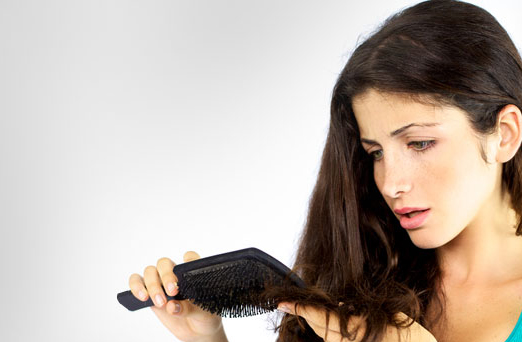 We value our hair and quietly weep at the sight of hair in the brush and on the floor.
We value our hair and quietly weep at the sight of hair in the brush and on the floor.
We may have tried products promising total hair repair solutions, but even these don't do much and hair fall continues to feature in our everyday nightmare list. Today, we're going back to the basics to bring you natural hair care solutions for healthy and strong hair. So how does one prevent hair loss? Here are the most effective ways to control hair fall naturally.
Hair fall, when not due to genetic reasons, is a direct fallout of a poor diet.
Your hair draws nutrition from food. If you favour high calorie junk food, then your hair hardly gets any nourishment and tends to break or fall. However, this doesn't mean that you need any exotic healthy ingredients.
Simply include fish and proteins that are rich in essential amino and fatty acids, opt for fresh dark green veggies, munch on nuts like almonds and walnuts, and go for whole grains in your diet. These ingredients are mostly part of an Indian kitchen, so make use of these materials to strengthen your hair.
Avoid scalding hot water baths.
This could also be the cause of hair loss. Why? Because the effects are adverse. Hot water opens the pores, completely washes off scalp oil, making your hair follicles brittle. This causes hair to break and fall. Instead, try washing your hair with lukewarm water and then rinse with cold water.
Water intake is important for healthy hair.
If your hair and scalp is dry, then your body is telling you to drink water. Water is the answer to dry scalp and unmanageable dry hair. Another point, avoid wetting your hair; it tends to make your hair weak. Include fruits in your diet as these also help increase hydration to your scalp.
Exercise is crucial for a healthy scalp and hair.
Ever wondered why fit people have lovely hair and skin? Not only does physical exercise improve metabolism, weight control and general health, it also improves the quality and texture of your hair and skin. Apart from this, the added benefits of increased blood circulation through exercise also relieves
you of stress - another cause for hair fall. Therefore, avoid stress and poor health, and you will avoid hair fall.
Is it necessary to trim your hair regularly?
Thanks to our harsh climate and toxic air, our hair tends to lose luster and weakens with daily stress. Hence, it's recommended that you trim your hair when the shaft is long enough.
Finally, here's something you'll enjoy: Get a hair massage!
Rub hot oil into your scalp to thoroughly nourish it. But avoid hair oil if you have dandruff as it will only intensify your dandruff and hair loss problems. Also, avoid head massages if you're prone to hair fall as it will only make it worse. But it is recommended that you apply oil one hour before you wash your hair for complete hair nourishment.
Still experiencing bad hair fall? Check if it's a medical condition.
If you're losing hair at a rapid rate despite following a healthy diet and exercise routine, then it could be serious. Many illnesses are linked to hair fall and hair thinning. Consult a healthcare provider to investigate if your hair fall is due to any genetic pre-conditions, hormonal changes, post pregnancy effects, menopause, or underlying illnesses.






Comments
Enjoyed looking through this, very good stuff, regards.
Add new comment